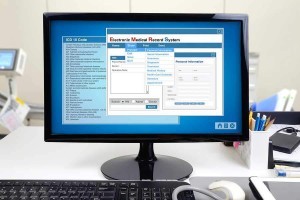Does the current state of government regulation and Electronic Health Record (EHR) Systems contribute to physician burnout?
According to the AMA President, Steve Stack, MD, the requirement to demonstrate “meaningful use” as part of the CMS EHR Incentive Programs is an example of a regulatory issue that can force physicians to put in frustrating, extraneous hours dealing with EHR tasks. Extra hours spent dealing with the inadequacies, inefficiencies and exorbitant expenses of operating an EHR are cutting into physician “downtime.” And a lack of downtime is one factor that can lead to feeling overworked, overburdened, overstressed, and under-supported – in other words, “burned out.”
Do similar EHR stressors contribute to therapist burnout?
Although physical and occupational therapists, and speech language pathologists, are not required by any law to use an EHR, in order to receive full reimbursement, a rehabilitation clinic that bills medicare must also meet the government’s EHR “meaningful use” standard. Whereas inpatient therapists simply deal with whatever EHR system their facility has chosen, private practice therapists are faced with the difficult task of choosing an EHR for their clinic. Many practice owners hire an IT expert to help them navigate the maze of EHR decisions and best practices. However, home health therapists may actually feel the greatest impact of their company’s EHR choice, as they work independently and basically use technology for all of their communication with the home office.
Unfortunately, the required components that enable a EHR system to meet the meaningful use standard do not include any measure of end user experience or design usability. End users of EHR systems, such as physicians, nurses, and therapists, have been lobbying for the government to begin rating EHR systems according to their usability since 2009, hoping that this would increase EHR effectiveness and efficiency.
Senate bill 2141, which would create a Three Star EHR usability rating system, was introduced on October 6, 2015 as the Transparent Ratings on Usability and Security to Transform Information Technology Act of 2015 (TRUST IT Act). This bill has been read twice but has yet to pass both the senate and congress before it would become law. In the meantime, Physical and Occupational Therapists and their Assistants, as well as the Speech Language Pathologists, who use these systems must adjust to increased levels of job stress.
But just how much stress? Does your EHR system contribute unhealthy stressors to your or your employee’s lives that cause feelings of being overworked, overburdened, overstressed, and under-supported – or in other words, “burned out?”
Answer the following questions to determine if your facility has EHR usability issues that might lead to feelings of burnout.
- Are your employees ever locked out of your system and unable to log their notes?
- Do your employees have immediate access to help when the system isn’t working correctly or when they have a question?
- How much time does it take to train a new employee to use your system?
- Do your employees actually use your system? Or do they work around it, jotting notes to themselves in other places.
- How often do your employees log into the system after hours in order to finish up their charts?
- What is it that prevents your employees from getting all of their notes completed during the day?
If you have issues with 3 or more of these questions, you should immediately make some changes to your EHR system or begin the process of switching to a new EHR today. Otherwise, you may soon find yourself, or your therapists, looking to work elsewhere.
What do you think?
Does the current EHR situation in American Healthcare contribute to physician or therapist burnout? Do you know anyone who has left the profession because of documentation changes? What has been most helpful in adjusting to electronic charting? Please share your story in the comments below. Thanks!





